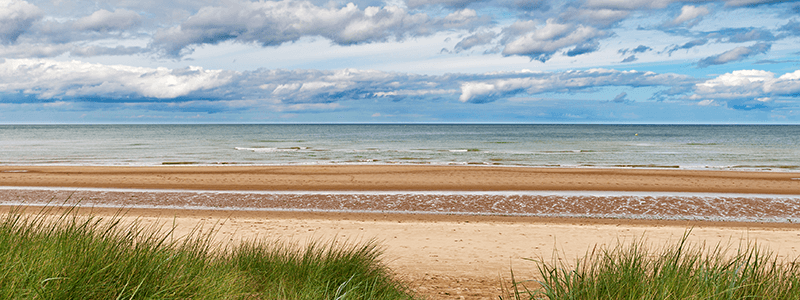

How a weather forecast made history - the D-Day Landings
It is a little-known fact that perhaps one of the most important weather forecasts ever made was the one for D-Day, the Allied invasion of France.
The importance of an accurate weather forecast
For the Allied invasion to have any chance of success, General Eisenhower – Supreme Commander of the Allied Forces - needed a full moon, a low tide, little cloud cover, light winds, and low seas. The low tide was necessary to allow soldiers to see, avoid, and disarm the mined obstacles. In June 1944, a full moon and low tide coincided on June 5, 6 and 7. The invasion of France had been scheduled for June 5, 1944. But weather observations taken in western Ireland on 3 June alerted the Allies to an approaching storm, and the decision was taken to delay.
Predicting developing storms across the Atlantic
One of Eisenhower’s chief meteorologists for the invasion was Group Captain James Stagg. Stagg was only one of several meteorologists studying the weather for the invasion. The team of meteorologists would confer regularly and disagree about the forecast. These meteorologists were operating without technology and equipment that today’s forecasters take for granted, such as satellites, weather radar, computer models and instant communications. Instead, they relied mainly on surface observations from military and civilian weather observers in Britain and in Western Europe and a few military observers at sea. So predicting the weather more than a day or two in advance was unrealistic. Predicting the exact timing, track and strength of developing storms out in the Atlantic put Stagg and his colleagues under almost unimaginable pressure and caused a lot of conflict.
Did a weather forecast change the course of history?
On the afternoon of 4 June, when the weather began to deteriorate as the first storm approached, Stagg's team were made aware of an observation from a single ship stationed six hundred miles west of Ireland reporting a rise in the barometric pressure. The pressure kept rising. Stagg deduced that there could be a break in the weather on 6 June.
That forecast was a pivotal moment in world history. If the forecast was wrong, the lives of thousands of men and massive amounts of equipment would be lost. But, on the other hand, if the unsettled weather forecast for 5 June had not happened and the weather had been good, the Germans might have spied the massive build-up of forces along the coast of southern England.
Late on June 4, Captain Stagg met again with the Allied commanders. Outside, the trees swayed in the wind, and a hard rain fell. Stagg told Eisenhower that they thought the weather would improve. There might be winds of force 3 or 4, rising to force 5 in a few places, but the sky should be clear. It might cloud over later, but the cloud bases should stay high enough for the naval gunners to spot their shots. Not ideal, but good enough.
The commanders met with Stagg again at 0430 on 5 June. The high pressure was holding and building in. The decision was taken to invade.
On 5 June, the convoys set out in force 5 winds to begin their seventeen-hour crossing. Early on the morning of 6 June, the Pathfinder planes for the paratroops ran into unexpected banks of clouds over the coast of France. They dropped their visual and radar beacons, but many fell in the wrong places. In addition, many of the visual beacons could not be seen with the cloud cover. The paratroops themselves went in C47 transport aircraft, and they too hit the cloud bank. The pilots had to break formation to prevent collisions. Some tried to get above the clouds. Some tried to go below. Some took evasive action as the antiaircraft fire began. As a result, the paratroops were dropped or glided in far from their intended targets.
While far from perfect, the weather on the morning of 6 June was good enough for the invasion to proceed, and the rest, as they say, is history.
The value and importance of forecasting in the build-up to D Day are examined further in Meteorological Services Leading to D-Day by R J Ogden.
Other resources
- Weather forecasting for D‐Day, June 1944 (R. A. S. Ratcliffe)
- A momentous forecast: Further thoughts on the D‐Day predictions (Adrian Gordon)
- The D‐Day landing of June 1944: extratropical cyclones and surface winds in June 1944 compared with a climatology based on the Twentieth Century Reanalysis (Christoph Welker Melanie Bieli Nicolas Piaget Michael Sprenger)
- Pen portraits of Presidents — Dr J. M. Stagg, CB, OBE, FRSE (R. A. S. Ratcliffe)




